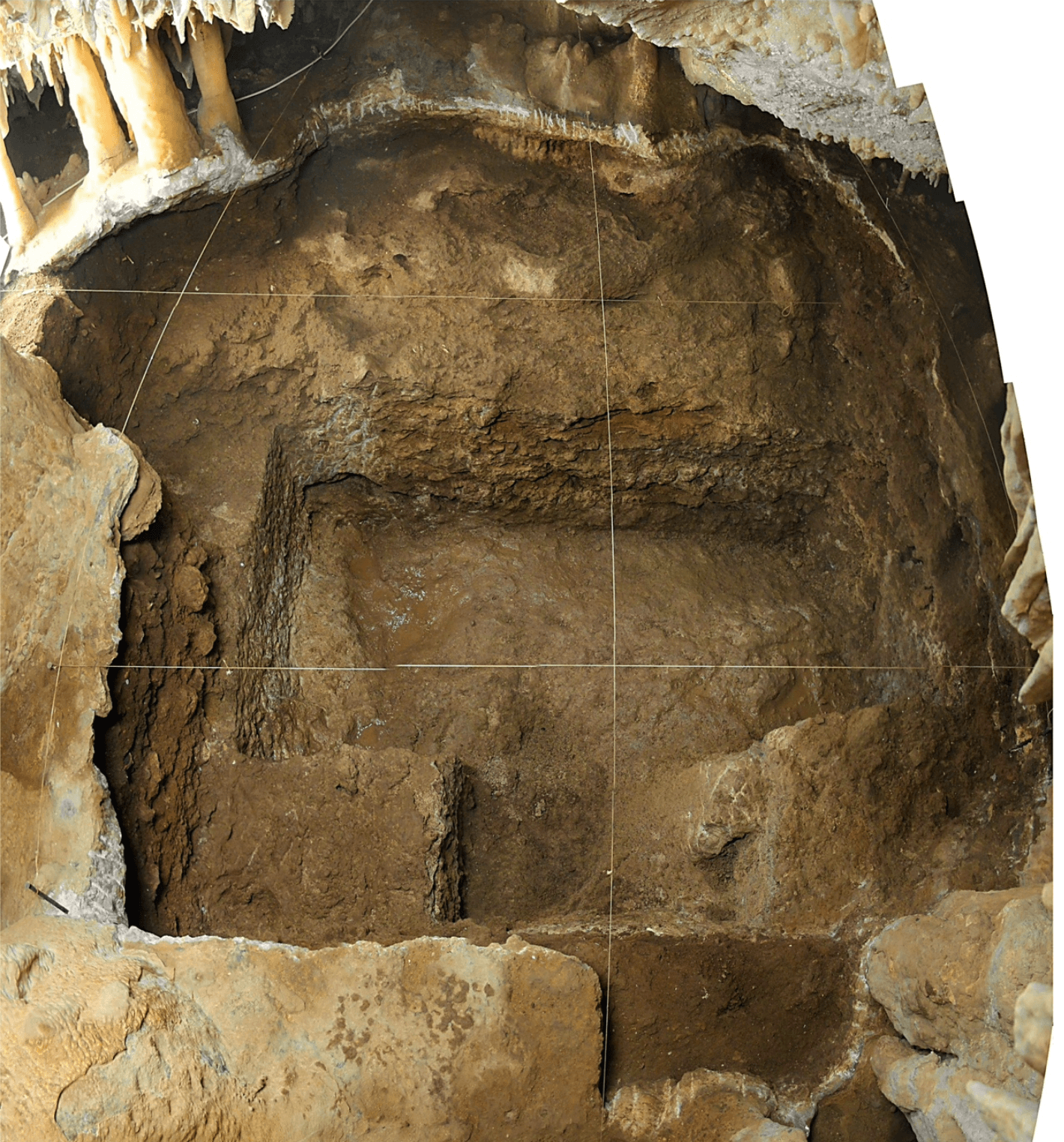Neanderthals and Homo sapiens more similar than previously thought

A cave on the Atlantic coast near the Portuguese capital of Lisbon has provided researchers with key archaeological information that questions the behavioural gap once thought to separate Neanderthals from contemporaneous Homo sapiens.
Scientists, including Associate Professor Lee Arnold and Dr Martina Demuro from the School of Physical Sciences, have uncovered new evidence about Neanderthal subsistence strategies, in a paper published in Science. The study follows excavations and dating research undertaken at the Portuguese archaeological site of Figueira Brava.
Pictured above: The marine abrasion platform of MIS 5e and the original, now-unroofed cave space. Image: Pedro Souto
Findings improve our understanding of human evolution

The Area F excavation trench at the end of the 2013 field season - each grid unit is 1m². Image: João Zilhão
Researchers believe the findings reveal important consequences for our understanding of human evolution:
- That if habitual consumption of seafood played an important role in the development of cognitive abilities, then this happened on the scale of Humanity as a whole
- That human familiarity with the sea and its resources is much older and more widespread than previously thought, which reinforces the ability of early migrating populations to cross open oceans and reach new continents, including Australia
- That the belief that Neanderthals were cold peoples, specialised in hunting large herbivores, results from a bias created by the historical focus of research.
The study shows the cave on the Portuguese coast was used as a shelter by Neanderthal populations over the course of twenty millennia between 86,000 and 106,000 years ago – that is, during the Last Interglacial period, when Earth's climate was similar to today.
The Neanderthal occupants left abundant archaeological remains, including indicators of intensive fire use, quartz and flint tools, and food remains. Most significantly, the site’s archaeology reveals that fishing and shell fishing were important components of the Neanderthal subsistence economy.
Associate Professor Lee Arnold and Dr Martina Demuro focused on dating sediments contained within the site using a technique known as optically stimulated luminescence (OSL) dating.
“This technique allows us to provide reliable ages for archaeological remains that are too old to be dated using radiocarbon,” says Associate Professor Arnold.
“We can determine when individual grains of quartz were last exposed to daylight before they became buried in the natural sediment environment. In doing so we can provide an indirect age for the archaeological remains contained within the sediments themselves.”
Dr Demuro says they were able to independently compare the OSL ages with a second set of ages obtained using a technique known as uranium-series dating, which is applicable to cave formations such as stalactites and stalagmites.
“The two sets of results were in perfect agreement, providing strong evidence that Neanderthals occupied the cave during the Last Interglacial,” Dr Demuro says.
Evidence for routine exploitation of marine resources, such as the harvesting of shellfish, fishing, and seal hunting, by coastal populations of Neanderthals in Europe and Asia has, until now, been scarce.
However, the evidence for these subsistence activities among their anatomically modern contemporaries (Homo sapiens) in South Africa is well known.
This apparent contrast has fuelled an influential model of human evolution that points to the habitual consumption of aquatic resources by anatomically modern African populations of the Last Interglacial (foods rich in Omega 3 and other fatty acids that favour the development of brain tissues) as the driver for an increase in their cognitive capacities.
This diet-fuelled advancement in cognitive capacities has been used to explain the early appearance, among African sapiens populations, of a symbolic material culture including body painting with ochre, the use of pendants, and decorations of ostrich eggs containers with geometric motifs.
According to this model, such behaviours would have reflected a capacity for abstract thought and communication via symbols, and would have led to the emergence of more organised and complex societies, whose demographic growth ultimately resulted in the colonisation of Eurasia.
In the process, Neanderthals and other ‘non-modern’ populations – both anatomically and, by implication, cognitively – would have inevitably fallen into extinction.
During the past decade, however, there has been growing evidence to suggest that Neanderthals also had a significant symbolic material culture.
Recent studies have revealed that Neanderthals practiced rock art, used sophisticated pigment blends, and practiced body ornamentation even earlier than has been documented among the first anatomically modern humans in Africa.
The research work was partly funded by an Australian Research Council Discovery Early Career Researcher Award (DECRA) project awarded to Dr Demuro.
